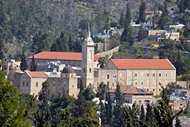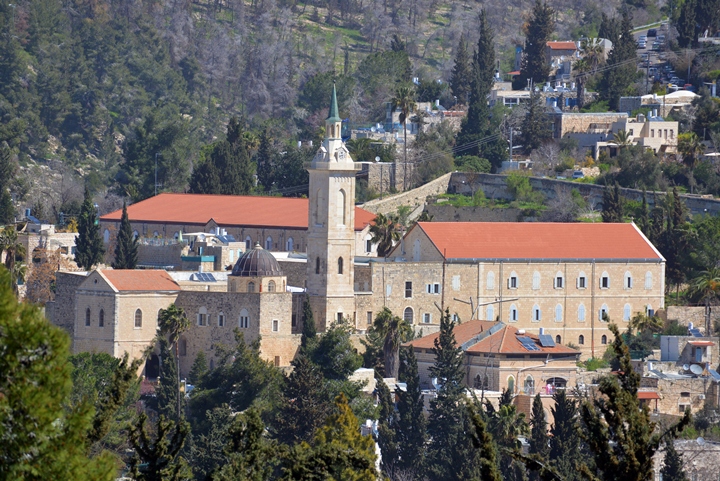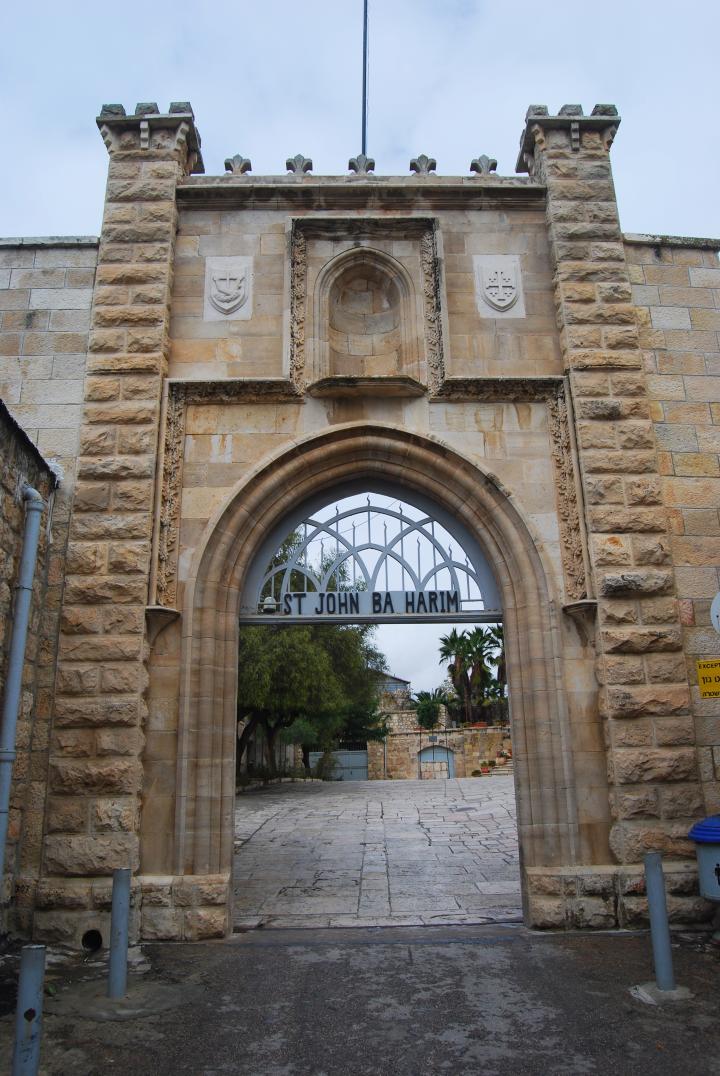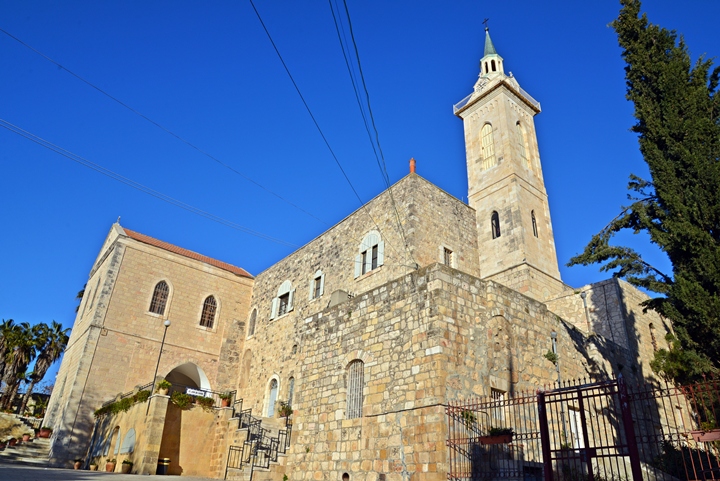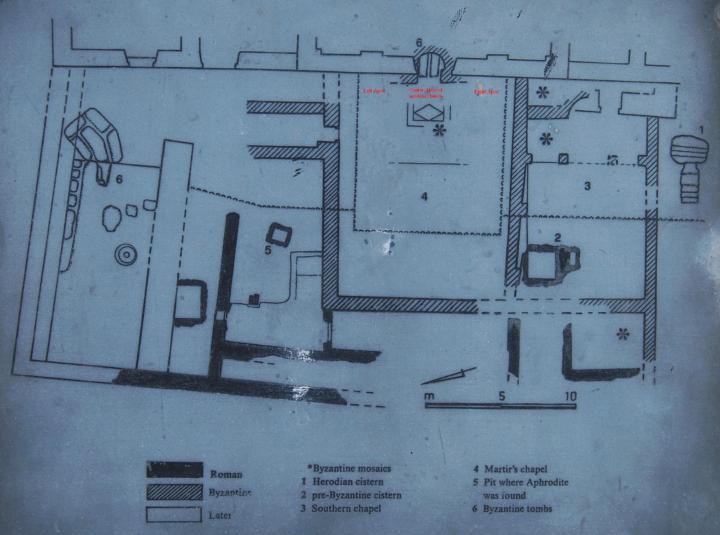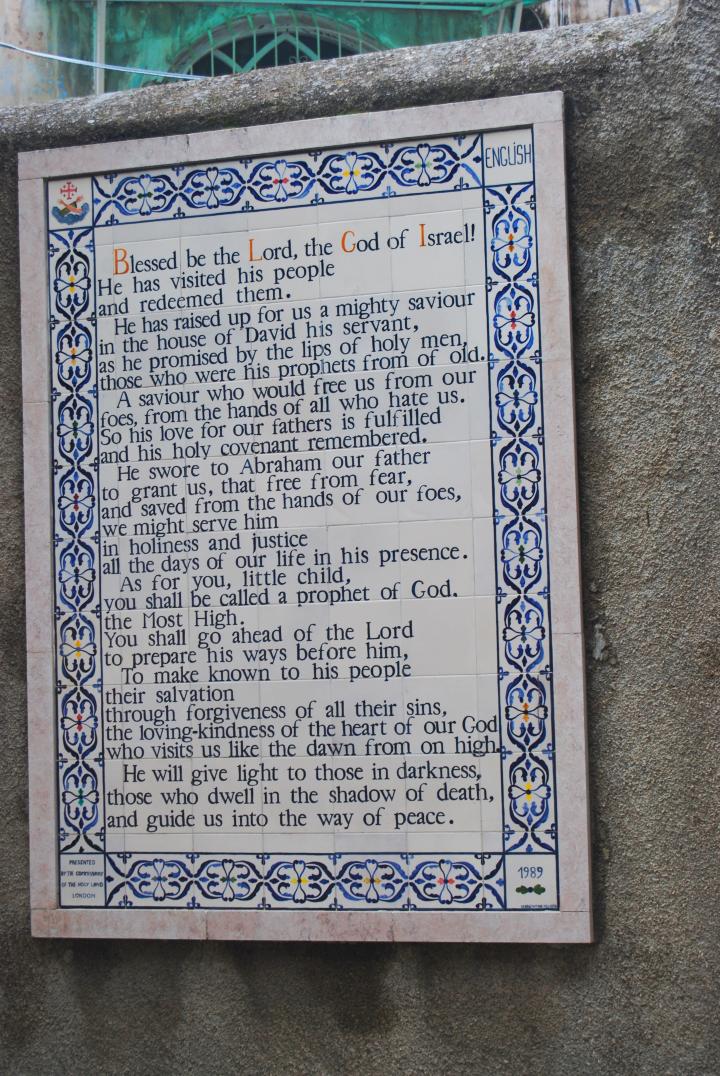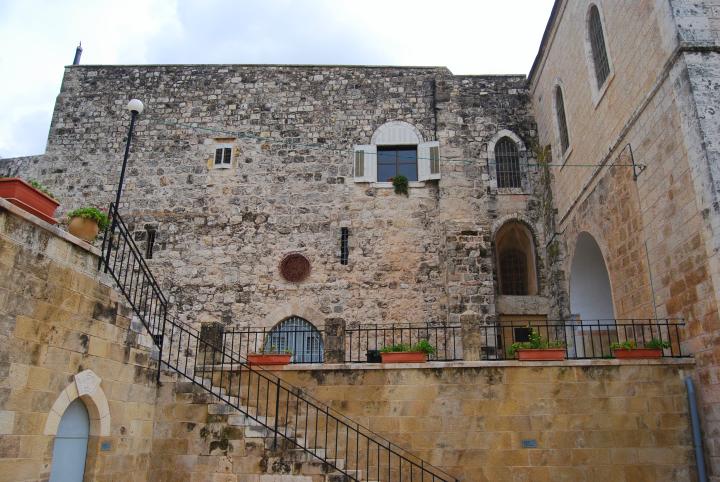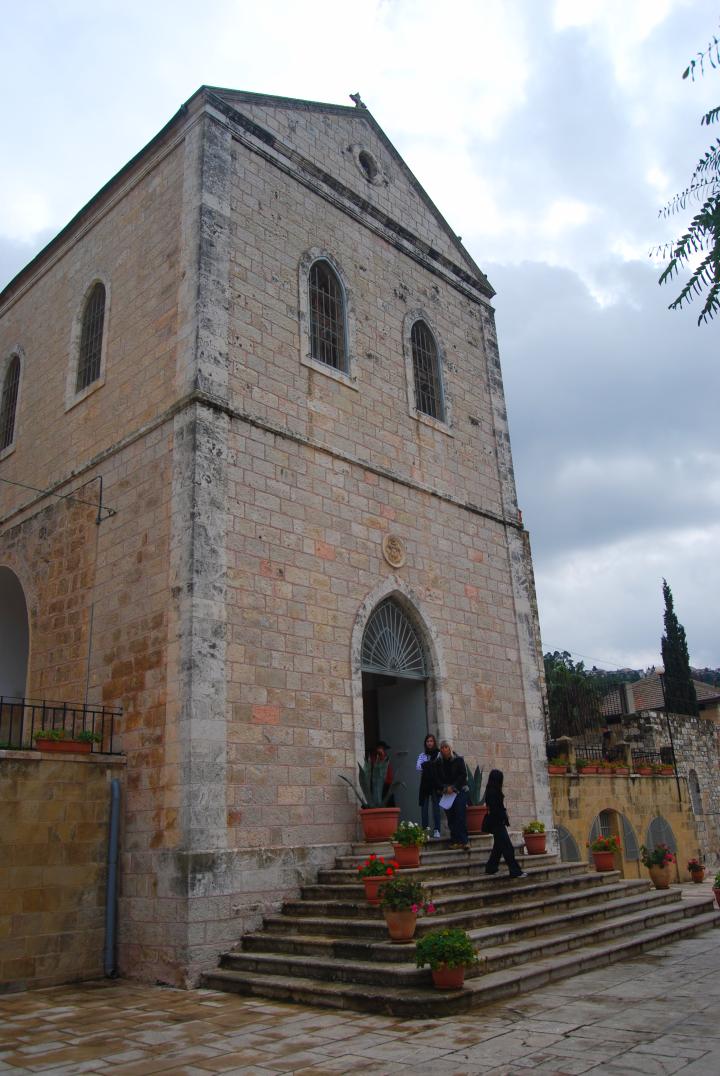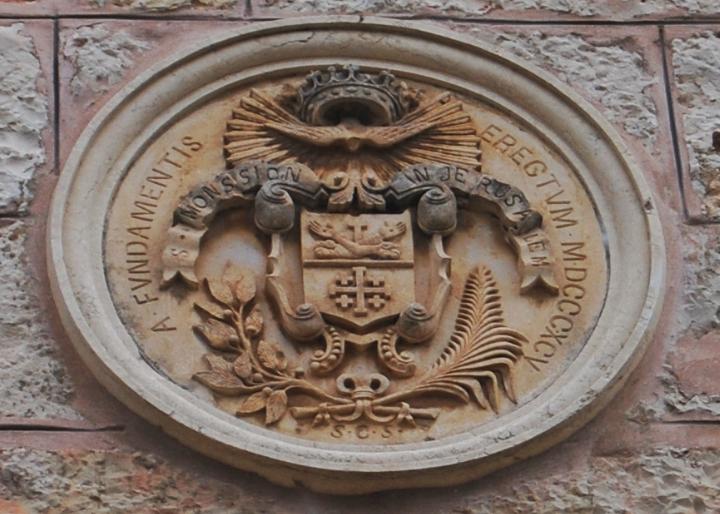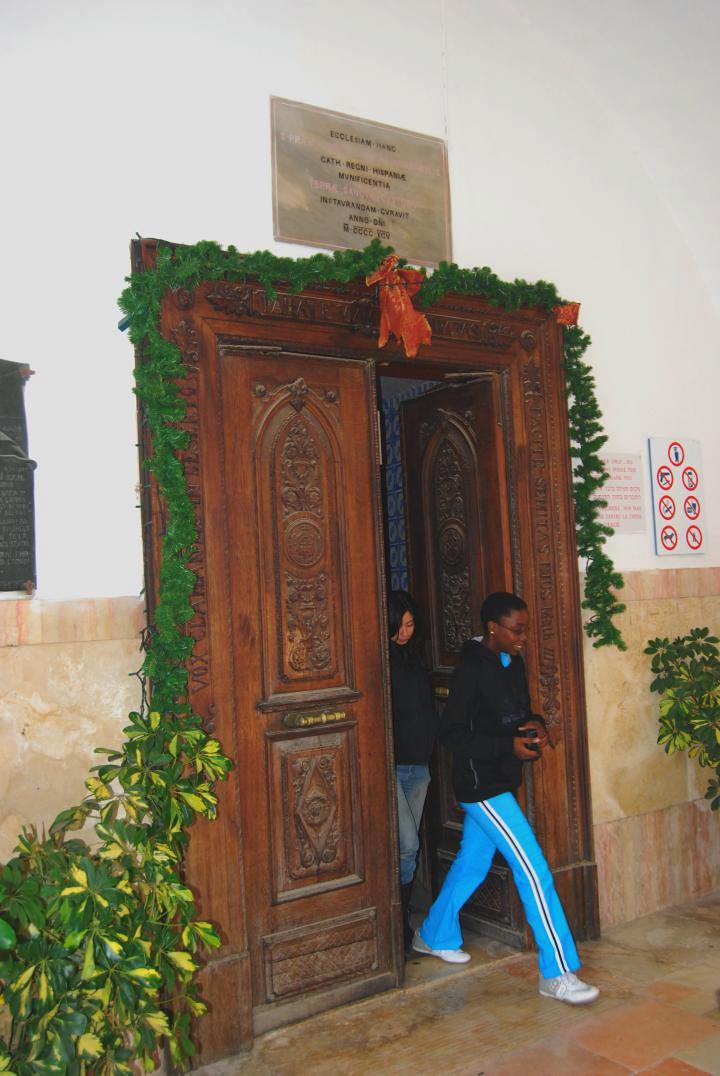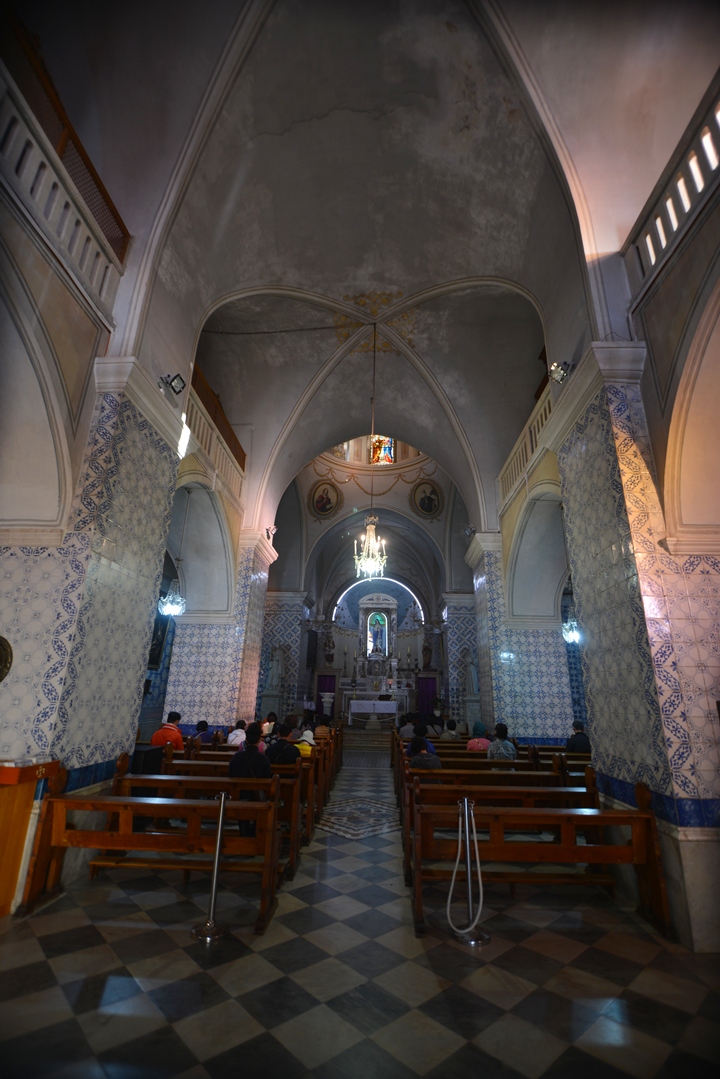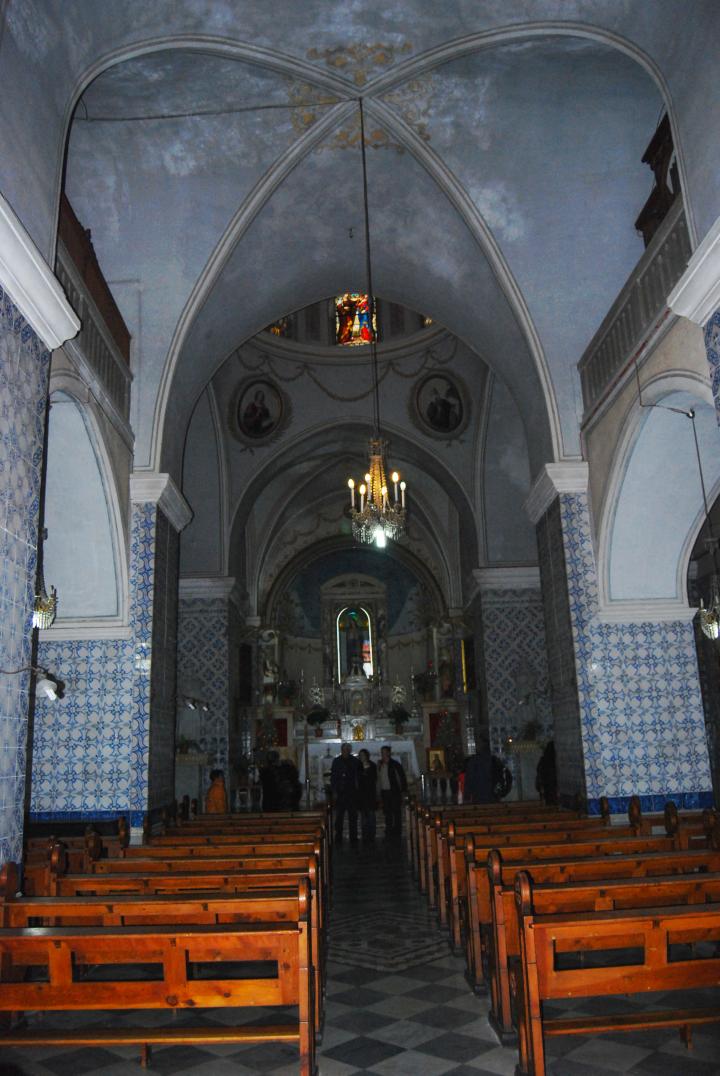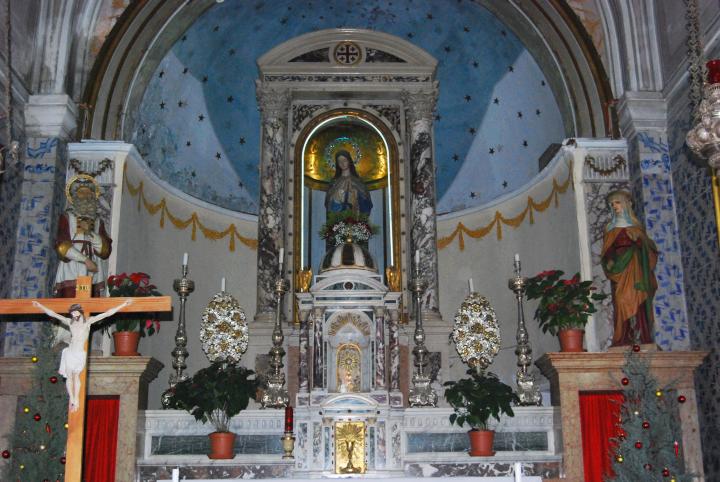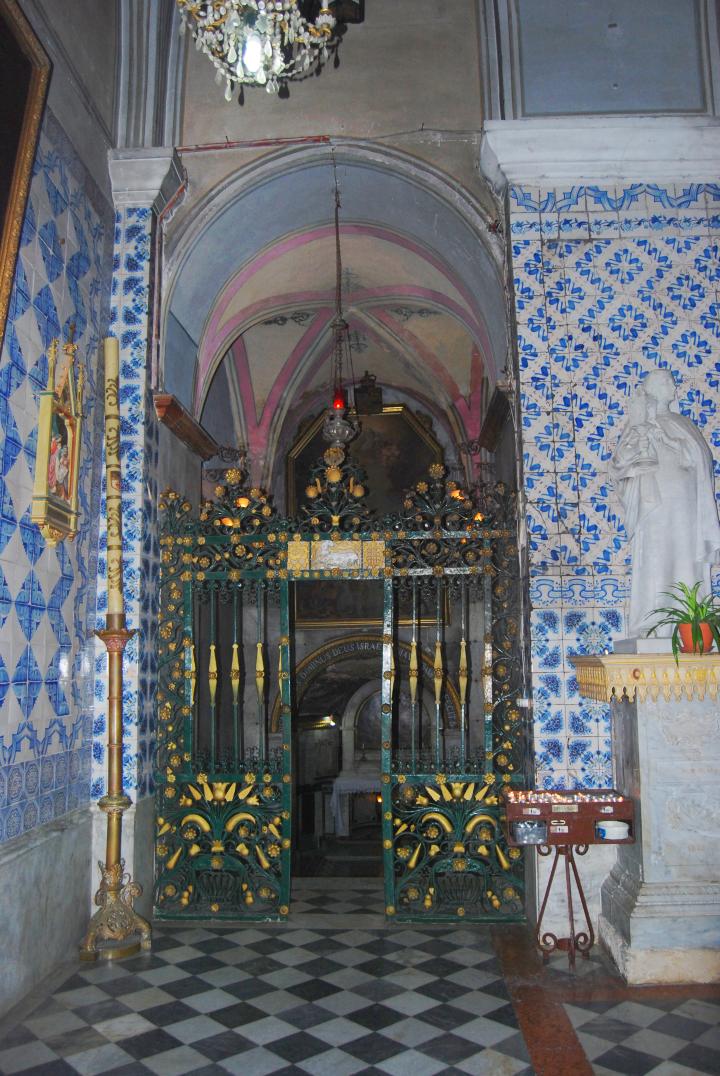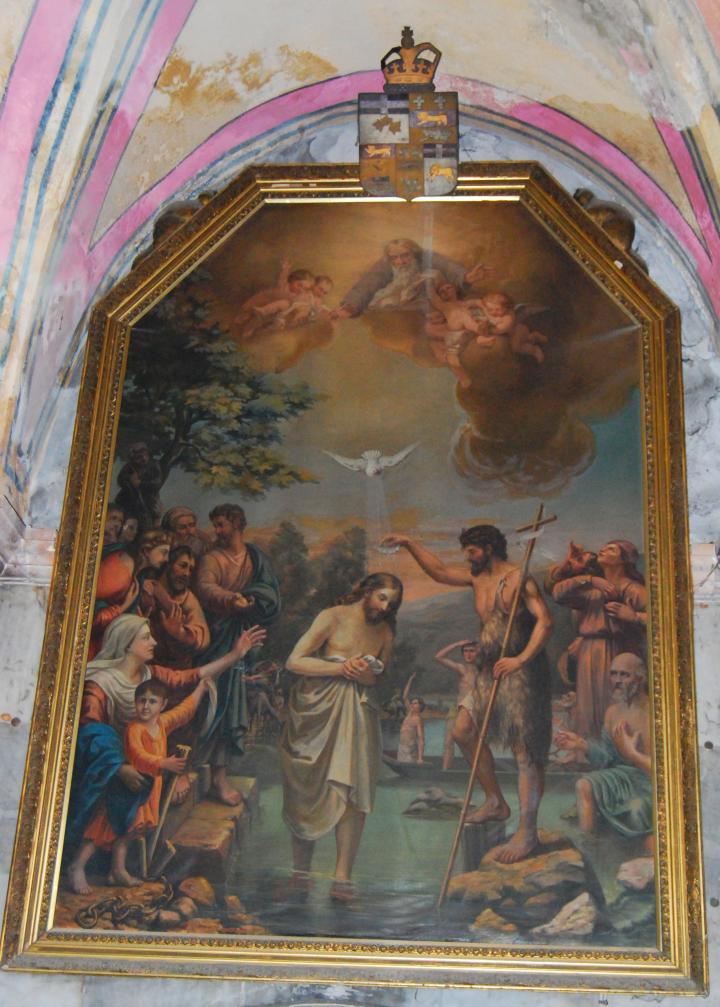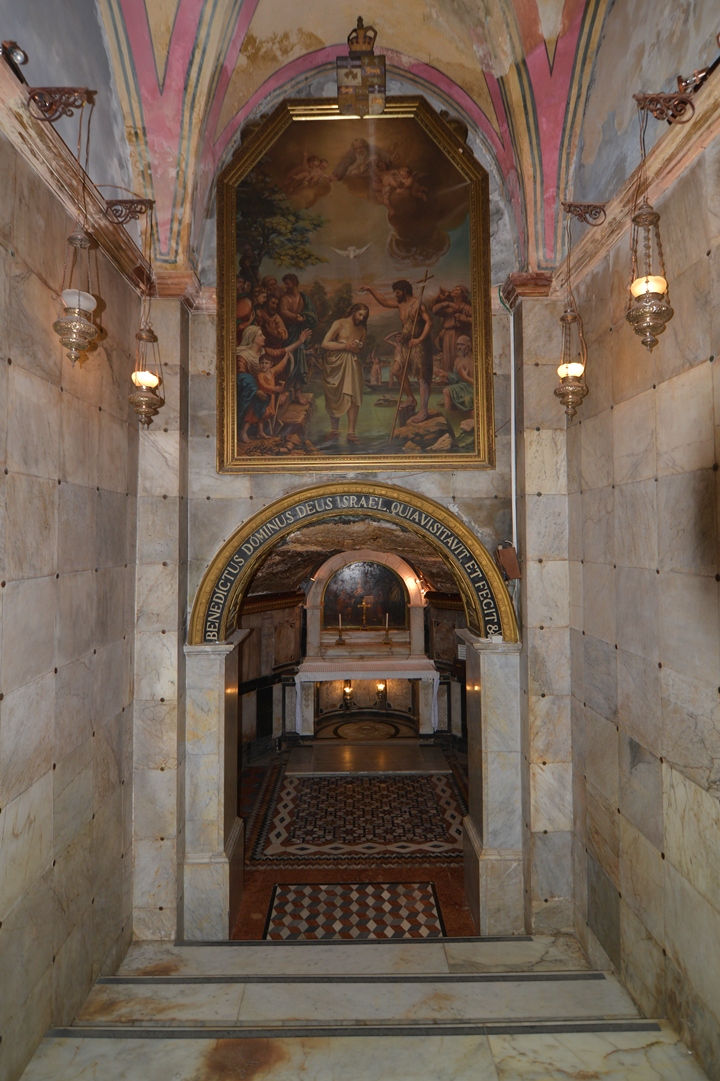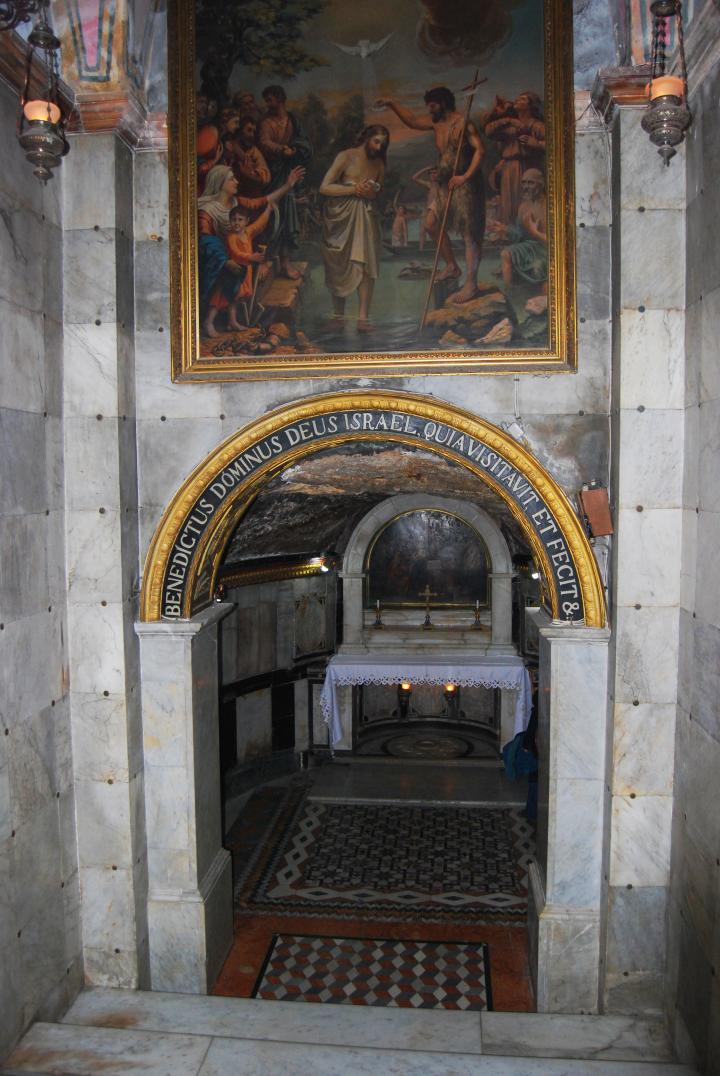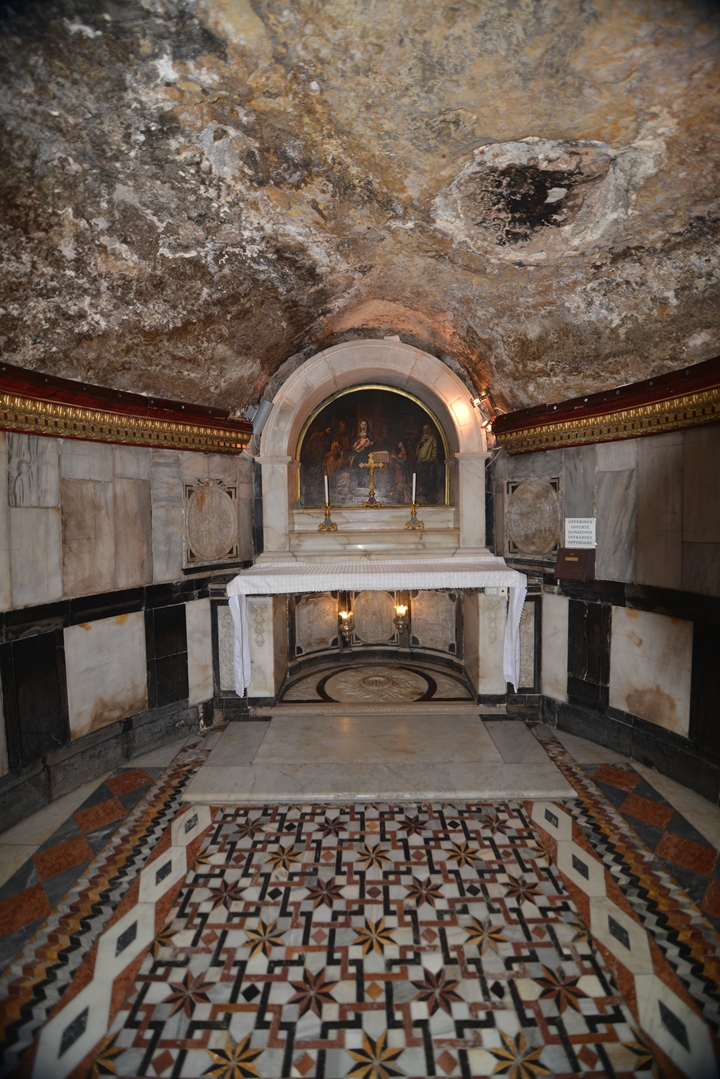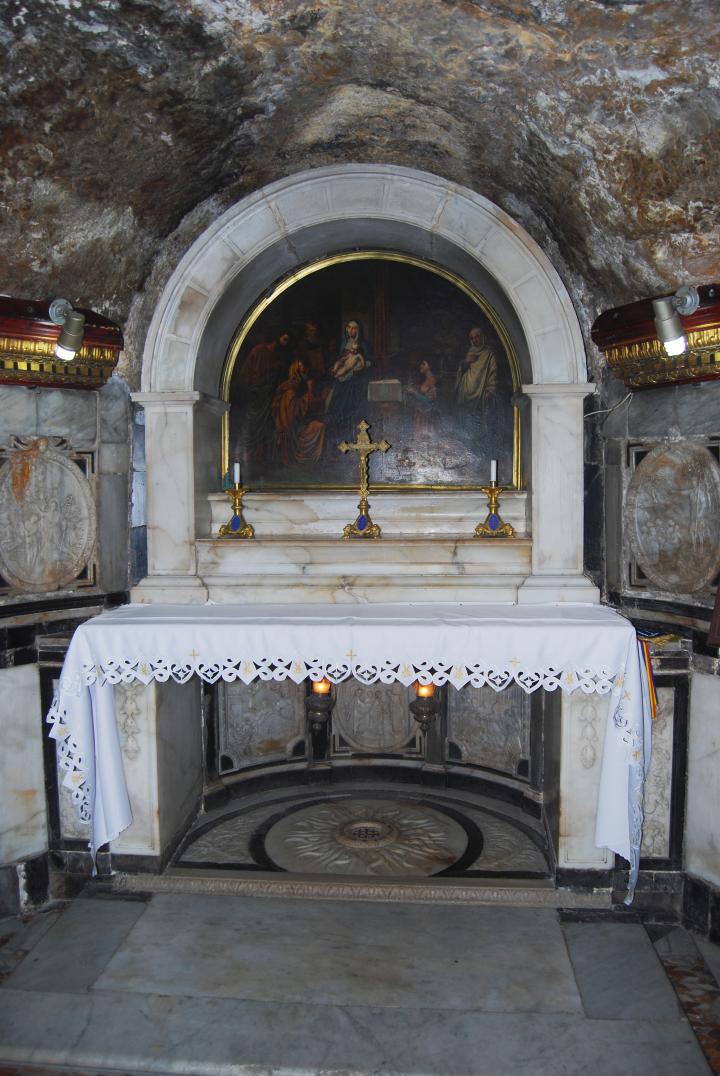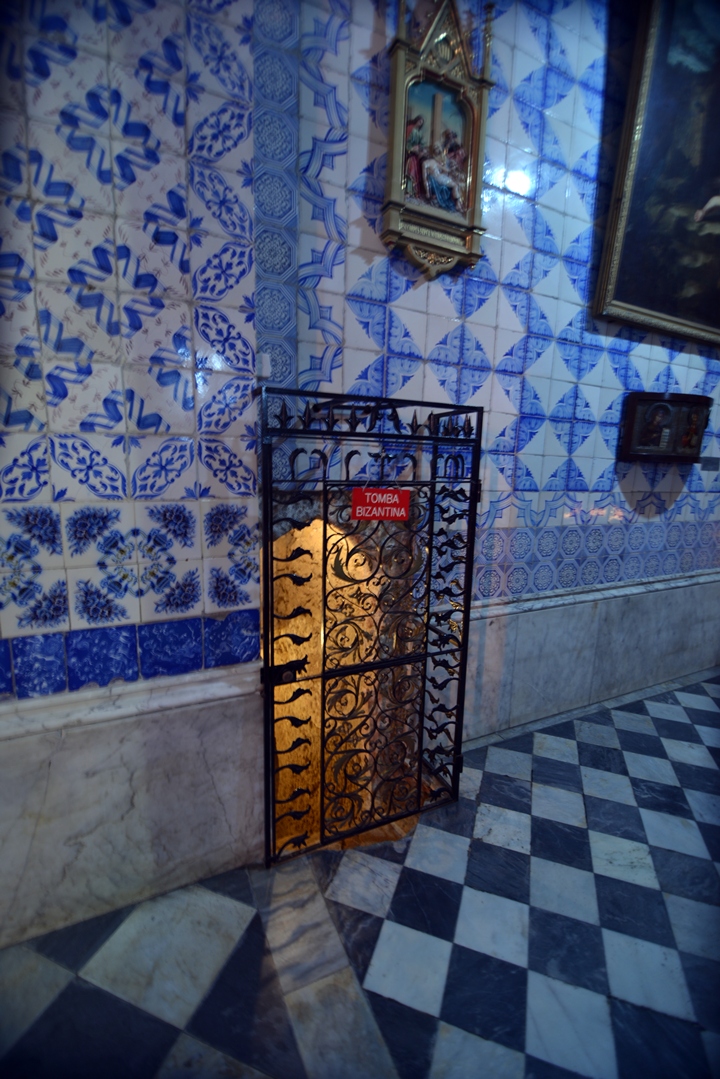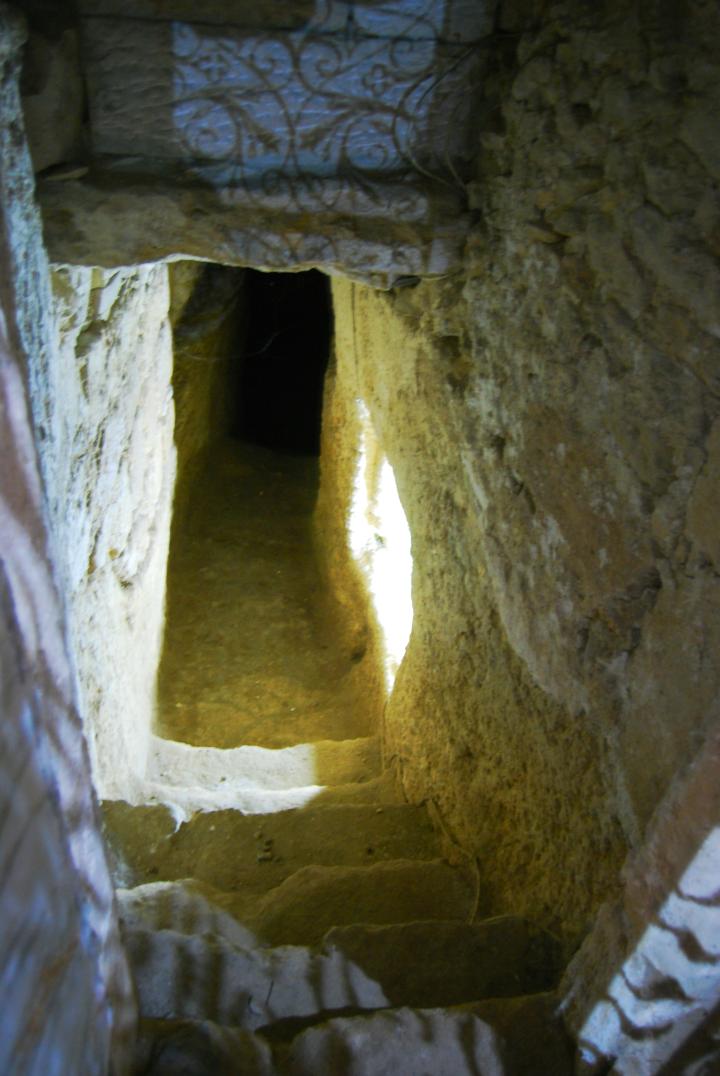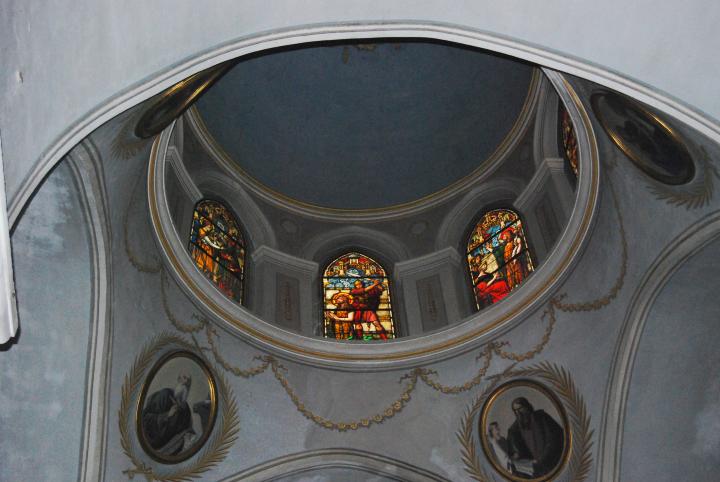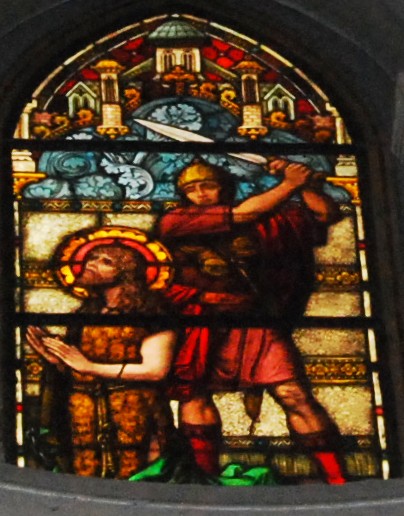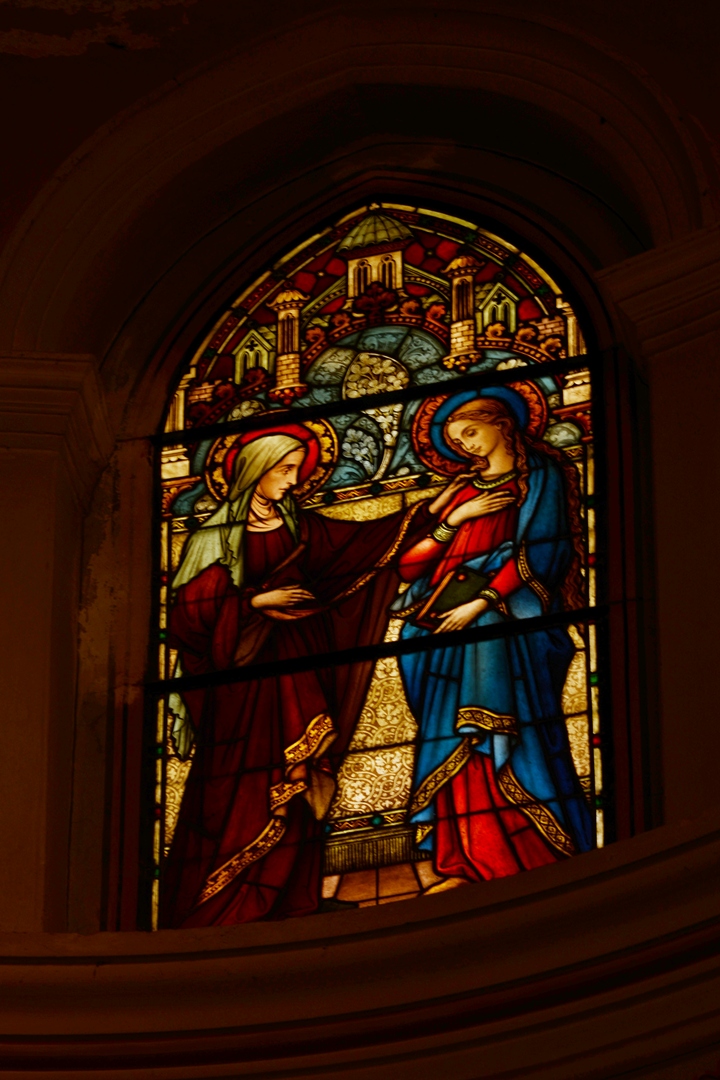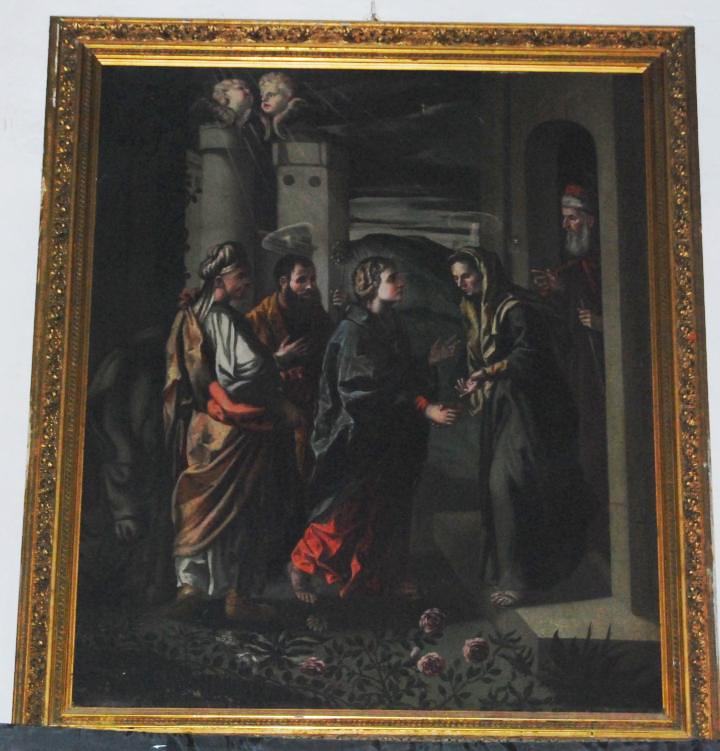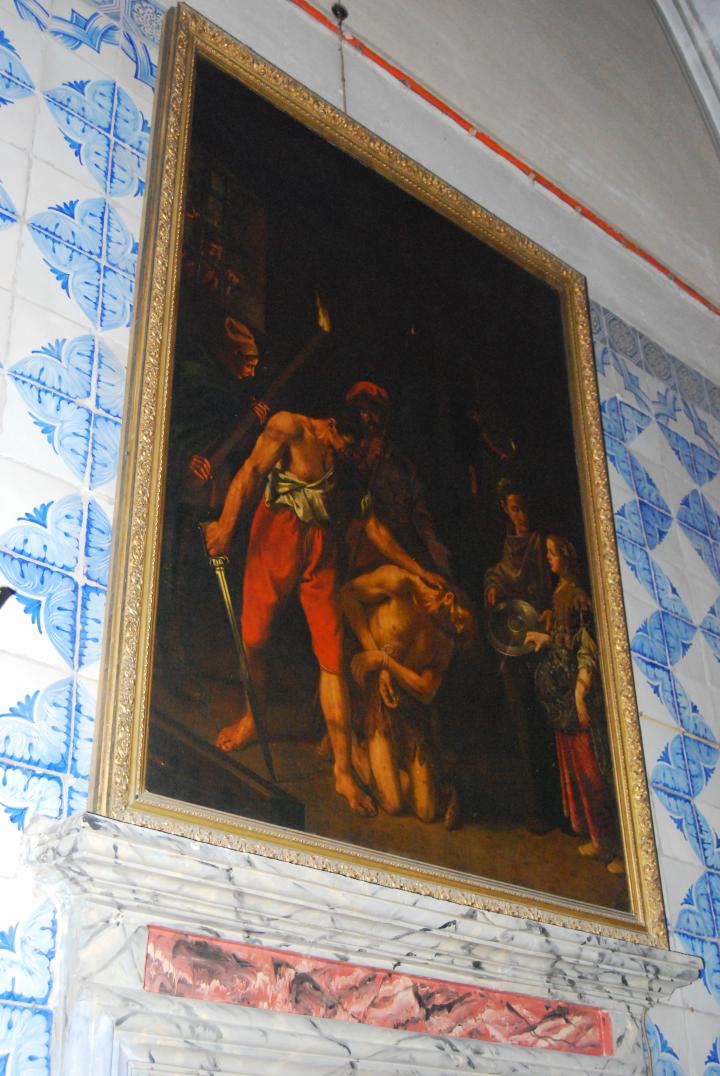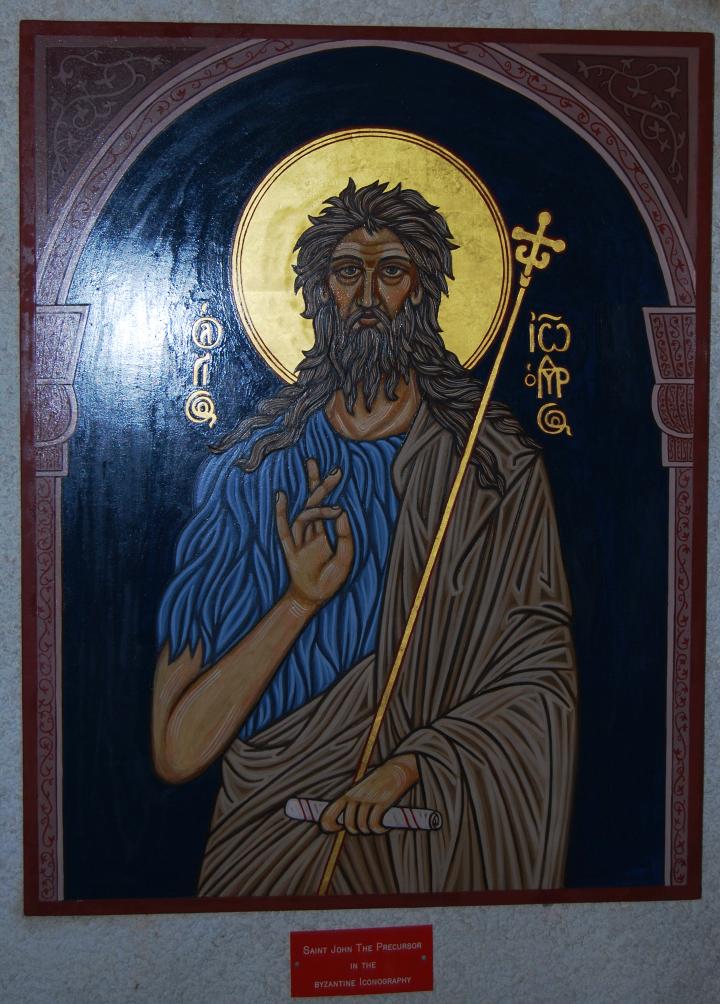A Catholic church and monastery in Ein Kerem, built over Byzantine and Crusaders ruins, and dedicated to John the Baptist. According to tradition, the site of his birthplace.
Home > Sites > Jerusalem > Ein Kerem > St. John Ba Harim
Contents:
Overview
Location
History
Photos
* General view
* Court Yard
* Church
* Left Apse
* North
* Ceiling
* Paintings
Biblical Refs
Etymology
Links
Overview:
St. John in Ein Kerem refers to the Church of St. John the Baptist, which is located in the Ein Kerem neighborhood of Jerusalem, Israel. Ein Kerem is a historic village that is believed to be the birthplace of John the Baptist, and the church was built on the site where he was supposedly born.
The church dates back to the Byzantine era, but it has undergone numerous renovations and restorations over the centuries. It features a blend of architectural styles, including Byzantine, Crusader, and Ottoman influences.
The church contains a number of significant religious and historical artifacts, including an ancient baptismal font, a painting of John the Baptist, and a statue of Mary, the mother of Jesus. The church also has a crypt, which is said to be the burial place of Elizabeth, the mother of John the Baptist.
St. John in Ein Kerem is a popular pilgrimage site for Christians, and it is open to visitors of all faiths. John is an important figure in Christianity , and regarded as the “forerunner” – since John Baptized Jesus, and proclaimed Jesus as the Messiah. It is considered to be one of the most important religious sites in Jerusalem, and it attracts thousands of visitors every year.
Luke 1 67-68: “And his father Zacharias was filled with the Holy Ghost, and prophesied, saying, Blessed be the Lord God of Israel; for he hath visited and redeemed his people”.
Location:
The church is located in the center of the village.
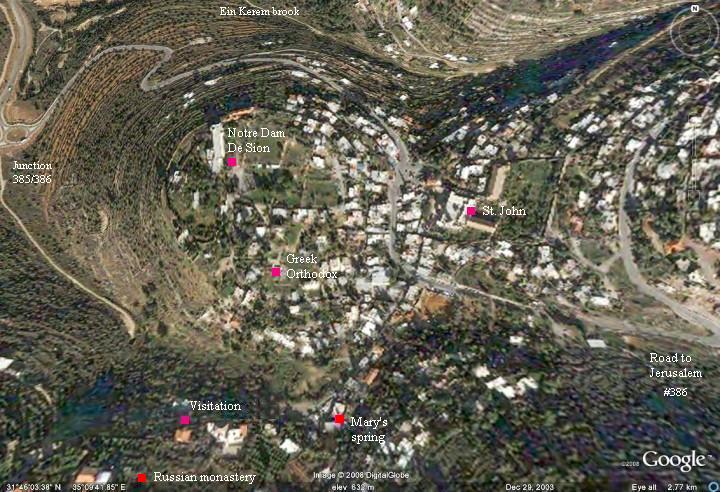
History:
-
Roman/Byzantine periods
The church and monastery was built over the ruins of ancient layers – Herodian, Roman, Byzantine and Crusaders.
According to Christian traditions, the cave inside the church was the birth place of John the Baptist, born to Zacharias the priest and Elizabeth cousin of Mary. As per Luke 1,5: “…a certain priest named Zacharias, of the course of Abia: and his wife was of the daughters of Aaron, and her name was Elisabeth”.
-
Byzantine period
The tradition of John’s birthplace started in the Byzantine period. It was mentioned in the the accords “De situ Terrae Sanctae” of the pilgrim-archdeacon Theodosius (published in 530 AD).
The Byzantine ruins include two chapels – the “Martyrs chapel”, where the modern church is located, and another chapel under the southern side of the monastery. The Martyrs chapel refer to the children killed by Herod (Matthew 2 16:”Then Herod… slew all the children that were in Bethlehem, and in all the coasts thereof, from two years old and under…”). A mosaic Greek inscription found here (“Hail! Martyrs of God”), located in front of the main altar of the modern church.
The Byzantine chapels were destroyed in the Samaritans revolt against the Christian-Byzantine Empire (529, 556).
-
Crusaders period
After regaining Jerusalem in 1104, the Crusaders rebuilt the chapel above the Byzantine ruins. The “Hospitallers” – the order of the Knights of the Hospital of Saint John – where behind the reconstruction, and are named after John.
It was destroyed in the 12th century and remained in ruins until the late Ottoman period.
-
Ottoman period
The Franciscan monks started to settled here in 1674, after Louis XIV arranged a permit from the Ottoman rulers. They purchased lands and houses, including the area of the monastery. The monastery was completed in 1895. The modern church was built in the second half of the 19th Century and completed in 1920. The construction was financed by the Spanish monarchs and since then the monastery is headed by the Spaniards.
The PEF report of 1881 described the church:
” ‘Ain Karim was given to the Franciscans through the influence of the Marquis de Nointal, Ambassador of Louis XIV. to the Sultan of Turkey…
The Church of the Baptist, in the village itself, is of Crusading origin ; but the interior has been covered with encaustic tiles, and none of the older work is recognizable. The dome rises from four heavy piers ; the grotto north of the high altar (at the east end of the church), is reached by seven steps ; it is said to be the birthplace of St. John. A bad copy of a Murillo is hung on the north side of the church, and much prized by the monks, who are chiefly Spaniards”.
-
Modern times
The monastery and church are open to the public and is a recommended site to visit.
Photos:
(a) General view:
A view of the church and the monastery is seen from the south west. Its bell tower dominates the center of the village.
Click on the photos to view in higher resolution…
The gate to the compound is located on the south side. Above the center of the gate is a cavity where a statue used to stand. On both sides of the center are symbols of the Franciscans.
The icon on the left side of the gate includes two hands on both sides of a cross – the symbol of the custody of the Holy places. In 1342 Pope Clement VI declared that the Franciscans are the official custodians of the Holy places (“Custodia Terroe Sanctoe”). This custody is still in effect to date.
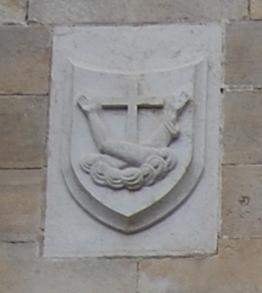
The bare hand on the left is the hand of Jesus, while the hand with a sleeve on the right is St. Francis of Assisi, the founder. Both hands are perforated – the holes created by nails (Jesus on the cross, St. Francis of stigmata).
The icon on the right side of the gate is the 5 crosses symbol – the Franciscan’s symbol. This symbol was the Crusaders sign of Jerusalem, and was adapted by the Franciscans. It is based on the 5 Holy wounds of the crucifixion of Jesus (2 in the hands, 2 in the legs, and one in the chest).
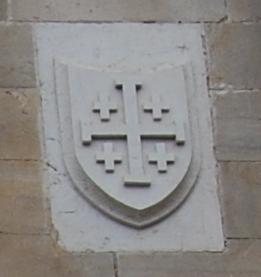
(b) Court yard:
Beyond the gate is an open court yard, with a view of the the church and parts of the monastery structures.
The excavations conducted here revealed earlier structures from Roman, Byzantine and Crusaders period. These include mosaics floors, chapels, pits, cisterns and tombs. A map of the findings is seen in the center of the yard, with indication of the findings and structures from the different periods.
Point #4 (below the place of the modern apses) is the location of the ruined Byzantine “Martyrs chapel”.
In point #5 the archaeologists found a Roman statue of Aphrodite. In point #3 is the location of the ruins of a second Byzantine chapel.
On the walls of the yard are ceramic tile plates, written in 24 different languages (below is the English plate). The text is a song of thanksgiving by Zacharias (Zechariah) , the father of John, after his son was born, as per Luke 1 67-79. In Latin the song is called “Benedictus” (translated to: Blessed) since it starts with “Benedictus Dominus Deus Israel…” , as seen above the cave of John inside the church.
The south side of the yard is seen below, with other sections of the monastery. Franciscan monks reside here and maintain the church and monastery.
A view of the western entrance to the church and monastery.
Above the entrance is the seal of the Franciscans, with the elements of the gate (two hands and Jerusalem 5-cross), the dove descending from the spirit of God (explained below). The year of the construction is inscribed on the right – 1895.
(c) Church:
The door to the church is seen below. Above the door is an inscription with the year 1895, and that the church was built with the generosity of the Spanish Catholics.
The hall of the church is seen below, with the central apse in the center.
The walls are covered with white ceramic tiles with light blue geometric decorations. The ceiling is supported on two rows of columns and side walls. The six large columns separate the hall to a nave (the central approach to the main altar) and to a left and right aisle.
The center apse is seen below, located on the east side (as in all ancient churches). The higher statues are of Mary, Elizabeth (mother of John) and Zacharias (father of John).
(d) Left Apse:
The left apse is the holiest section of the church, and is based on a cave where according to tradition was the birthplace of John. On the right side is a marble status of Saint Clare (1193-1252) , the disciple of Saint Francis who founded the second Franciscan Order called the Poor Clares. Francis of Assisi was the founder of the Franciscan order and his statue is located on the other side of the main altar.
On the left side is a wooden frame with an illustration of one of the stations along Via Dolorosa. Such paintings are hanged along the walls of the church.
Inside the cave is a painting of the Baptism of Jesus by John the Baptist in the Jordan river. John performs an important ritual : announcing that Jesus is the Son of God and the Messiah. This was a turning point in Jesus life which launched his holy mission. Matthew 3 13-17: “Then Jesus came from Galilee to the Jordan to be baptized by John… As soon as Jesus was baptized, he went up out of the water. At that moment heaven was opened, and he saw the Spirit of God descending like a dove and lighting on him. And a voice from heaven said, “This is my Son, whom I love; with him I am well pleased.” The dove with the spirit of God is seen in the center.
Under the painting is an arched entrance to the cave, with several steps descending to the lower level.
The inscription above the entrance reads in Latin a part of Zacharias blessing (Luke 1 verse: “Blessed be the Lord God of Israel; for he hath visited and redeemed his people”). The cave is thus named as the Grotto of Benedictus, meaning the song (or canticle) of Zecharias.
The interior of the cave is seen below. Along the walls are white marble bas relieves illustrating biblical events.
A marble star under the altar has a Latin inscription – Here was born the precursor (forerunner) of the Lord (“Hic precursor Domini natus est”).
(e) North side:
On the left (north) aisle is an entrance to a network of Byzantine tombs (“Tomba Bizantina”) and cisterns.
Inside, steps lead down into the underground area:
(f) Ceiling:
In the dome above the central apse are colorful glass paintings illustrating Biblical scenes.
One of the glass paintings illustrates the beheading of John the Baptist by the executioner on behalf of Herod.
Another glass painting on the dome illustrates the visitation event – when Mary meets her cousin Elizabeth, mother of John:
(g) Paintings:
Many of the paintings in the church were painted by 17th century Spanish painters, and were donated by the Spanish Royal family who sponsored this church. The great Spanish painter El-Greco may have painted the meeting of Mary and her cousin Elizabeth and Zacharias (as detailed in the Visitation church), a painting located above the right apse.
Another painting, illustrating the beheading of John in the prison by the executioner, is seen below. The daughter of Herodias, wife of Herod Antipas, holding the charger (plate) to receive his head and show it to her mother. This 16th century painting follows Matthew 14 “… and beheaded John in the prison. And his head was brought in a charger, and given to the damsel (young girl): and she brought it to her mother”.
The plate below the painting reads “Saint John the Precursor (forerunner) in the Byzantine Iconography”.
Biblical References:
(a) Matthew 14 1-12:
The beheading of John:
“At that time Herod the tetrarch heard of the fame of Jesus, And said unto his servants, This is John the Baptist; he is risen from the dead; and therefore mighty works do shew forth themselves in him. For Herod had laid hold on John, and bound him, and put him in prison for Herodias’ sake, his brother Philip’s wife. For John said unto him, It is not lawful for thee to have her. And when he would have put him to death, he feared the multitude, because they counted him as a prophet. But when Herod’s birthday was kept, the daughter of Herodias danced before them, and pleased Herod. Whereupon he promised with an oath to give her whatsoever she would ask. And she, being before instructed of her mother, said, Give me here John Baptist’s head in a charger. And the king was sorry: nevertheless for the oath’s sake, and them which sat with him at meat, he commanded it to be given her. And he sent, and beheaded John in the prison. And his head was brought in a charger, and given to the damsel: and she brought it to her mother. And his disciples came, and took up the body, and buried it, and went and told Jesus”.

Herod’s daughter receives the head of John the Baptist-
Drawing by Gustav Dore (French artist, 1832-1883)
(b) Mark 6 14-29:
Another version of the beheading of John:
“And king Herod heard of him; (for his name was spread abroad:) and he said, That John the Baptist was risen from the dead, and therefore mighty works do shew forth themselves in him. Others said, That it is Elias. And others said, That it is a prophet, or as one of the prophets. But when Herod heard thereof, he said, It is John, whom I beheaded: he is risen from the dead. For Herod himself had sent forth and laid hold upon John, and bound him in prison for Herodias’ sake, his brother Philip’s wife: for he had married her. For John had said unto Herod, It is not lawful for thee to have thy brother’s wife. Therefore Herodias had a quarrel against him, and would have killed him; but she could not: For Herod feared John, knowing that he was a just man and an holy, and observed him; and when he heard him, he did many things, and heard him gladly. And when a convenient day was come, that Herod on his birthday made a supper to his lords, high captains, and chief estates of Galilee; And when the daughter of the said Herodias came in, and danced, and pleased Herod and them that sat with him, the king said unto the damsel, Ask of me whatsoever thou wilt, and I will give it thee. And he sware unto her, Whatsoever thou shalt ask of me, I will give it thee, unto the half of my kingdom. And she went forth, and said unto her mother, What shall I ask? And she said, The head of John the Baptist. And she came in straightway with haste unto the king, and asked, saying, I will that thou give me by and by in a charger the head of John the Baptist. And the king was exceeding sorry; yet for his oath’s sake, and for their sakes which sat with him, he would not reject her. And immediately the king sent an executioner, and commanded his head to be brought: and he went and beheaded him in the prison, And brought his head in a charger, and gave it to the damsel: and the damsel gave it to her mother. And when his disciples heard of it, they came and took up his corpse, and laid it in a tomb.”
(c) Luke 1 67-79:
The verses of Zacharias blessings, as inscribed on tiles around the court yard:
“And his father Zacharias was filled with the Holy Ghost, and prophesied, saying, Blessed be the Lord God of Israel; for he hath visited and redeemed his people, And hath raised up an horn of salvation for us in the house of his servant David; As he spake by the mouth of his holy prophets, which have been since the world began: That we should be saved from our enemies, and from the hand of all that hate us; To perform the mercy promised to our fathers, and to remember his holy covenant; The oath which he sware to our father Abraham, That he would grant unto us, that we being delivered out of the hand of our enemies might serve him without fear, In holiness and righteousness before him, all the days of our life. And thou, child, shalt be called the prophet of the Highest: for thou shalt go before the face of the Lord to prepare his ways; To give knowledge of salvation unto his people by the remission of their sins, Through the tender mercy of our God; whereby the dayspring from on high hath visited us, To give light to them that sit in darkness and in the shadow of death, to guide our feet into the way of peace”.
Etymology (behind the name):
- Kerem – Hebrew: vineyard. As in 1 Kings 23 1: “”And it came to pass after these things, that Naboth the Jezreelite had a vineyard”.
- Ein, Ma’ayan – Hebrew: spring. Based on “Ma’im” – water. There are dozens of references in the Bible, since water was a major factor in this dry land.
- Ein Kerem (Karem) – the spring of the vineyard.
- BetHaccerem – Hebrew: The house of the vineyard. Beth – house.
- John – the Baptist. from Hebrew, “Yochanan”, which means: Yo (God) + Chanan (Pardoned). Thus the name in Hebrew means ” God has pardoned”. Biblical Reference: Mark 1 4,5: “John did baptize in the wilderness…in the river of Jordan”.
Names of the site –
- Ba Harim – Hebrew – In (Ba) the mountains (Harim).
- Saint Jean in Montana – French name of the site – St John in the mountains
- S. Giovanni in Montana – Italian name of the site
- San Juan in Montania – Spanish name of the site
Links:
On St. John:
Jerusalem archaeological survey (pdf, Hebrew):
* Other BibleWalks sites in Ein Kerem:
- Overview of Ein Kerem
- Visitation church
- Mary’s spring
- Greek Orthodox
- Sisters of Lady of Zion
- Russian Convent
Other sites:
BibleWalks.com – walk with us through the sites of the Holy Land
Mary’s spring<<<—previous Jerusalem site–<<< All Sites >>>—> Greek Orthodox, Ein Kerem
This page was last updated on Mar 19, 2023 (new overview)
Sponsored links:
